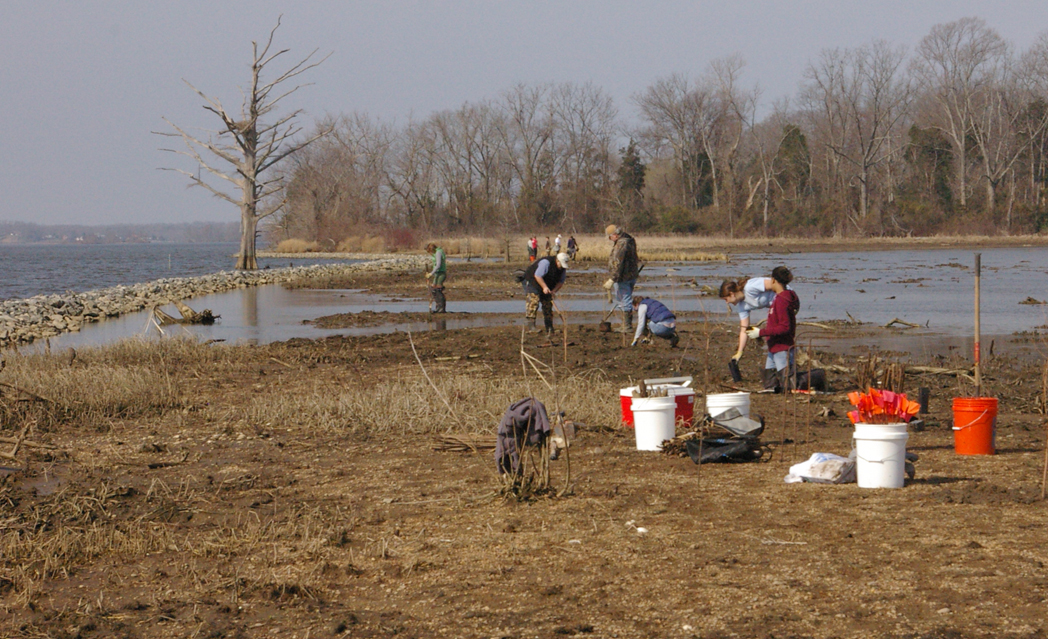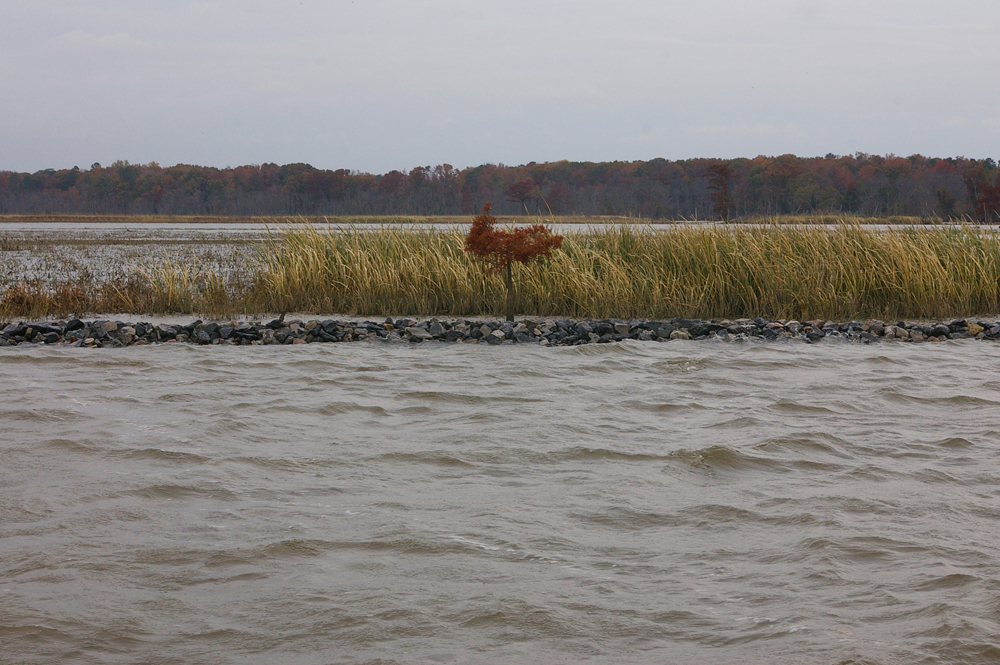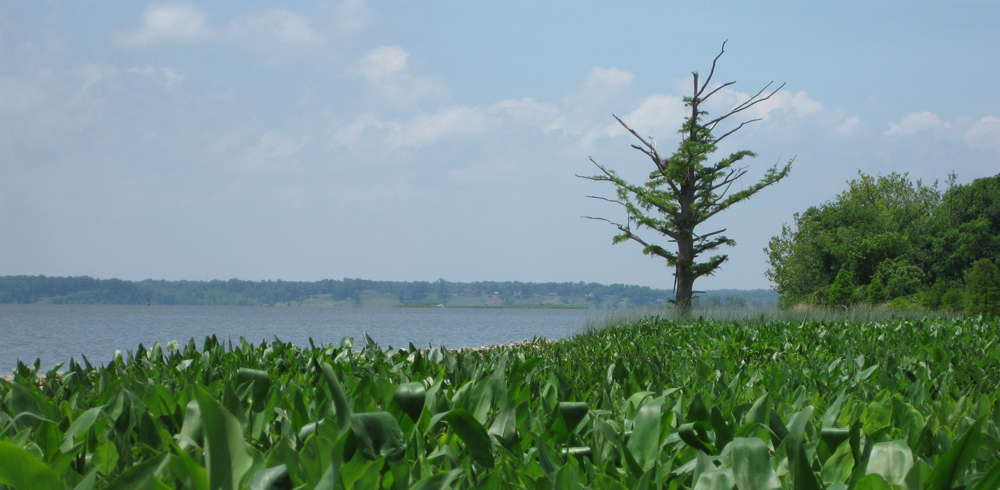2019 is set to be an exciting year for watershed restoration in the Lower James as we begin work to install Living Shorelines practices, thanks to several recent grants. Read on to learn more about this method of shoreline protection and why it could be a game changer for the Lower James!
What is a living shoreline?
Living shorelines are shoreline protection strategies based on natural processes that not only protect shorelines and critical infrastructure but also conserve or restore shoreline habitats. Living shorelines are considered the preferred method of shoreline stabilization by the General Assembly. Instead of depending on hardened structures, such as riprap and bulkheads, to protect upland areas from erosion, living shorelines rely on natural means of shoreline stabilization such as native wetland grasses and oyster reefs.

Why living shorelines?
There are many benefits that living shorelines provide that hardened shorelines cannot. Native plants provide habitat and prevent erosion. Marshes are more responsive to changing water levels; as sea levels rise, marshes can adapt by retreating where a bulkhead cannot. Living shorelines also provide water quality benefits as marshes retain sediment and nutrients, keeping these pollutants from entering the James River and its tributaries.
One of the greatest challenges facing the Lower James Region is its resilience to the impacts of climate change. As sea levels rise, localities are increasingly dealing with recurring flooding events due to storm surges, heavy rainfall, and even high tides. In response, localities in the Tidewater region are looking to increase the resilience of their natural resources and living shorelines can play a critical role.

What are we doing to increase the amount of living shorelines in the Lower James?
While living shorelines are highly effective they are also a relatively unknown practice. The James River Association, through grants with the National Fish and Wildlife Foundation, will be working to increase capacity for these practices in the Hampton Roads region. Through these grants we will work to support both urban and rural communities at risk due to climate-related impacts.
Over the next 3 years, we will be installing several living shorelines projects throughout urban and rural areas in the Lower James Watershed. Additionally, we will be spreading the word about this practice through workshops geared towards localities and shoreline professionals.
Want to see a living shoreline for yourself?
Check out the Living Shorelines Story Map, courtesy of the VIMS Center for Coastal Resource Management. Several of these sites are in the Lower James – you can explore them through the online Story Map or visit them in person!
Are you a landowner who is interested in installing a living shoreline on your property?
The Virginia Conservation Assistance Program (VCAP) is a cost-share program that provides financial assistance to property owners to install stormwater best practices, including living shorelines. For more information, contact your local Soil and Water Conservation District. Look up your district by the county you live in here.

